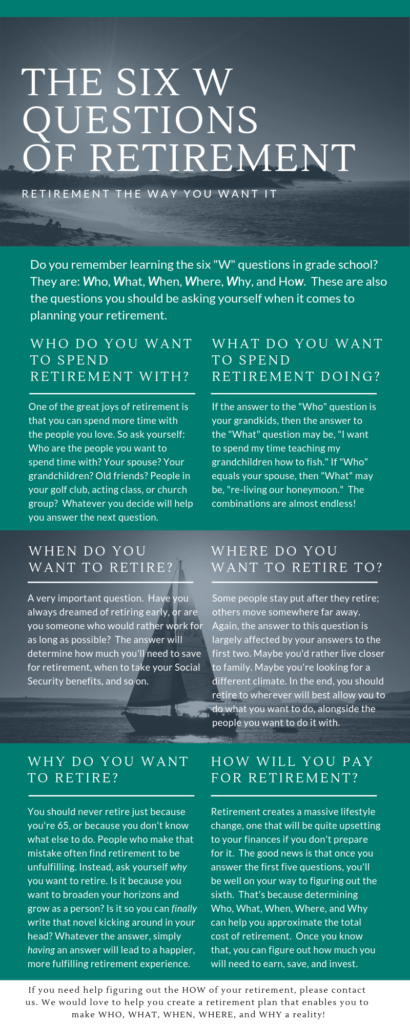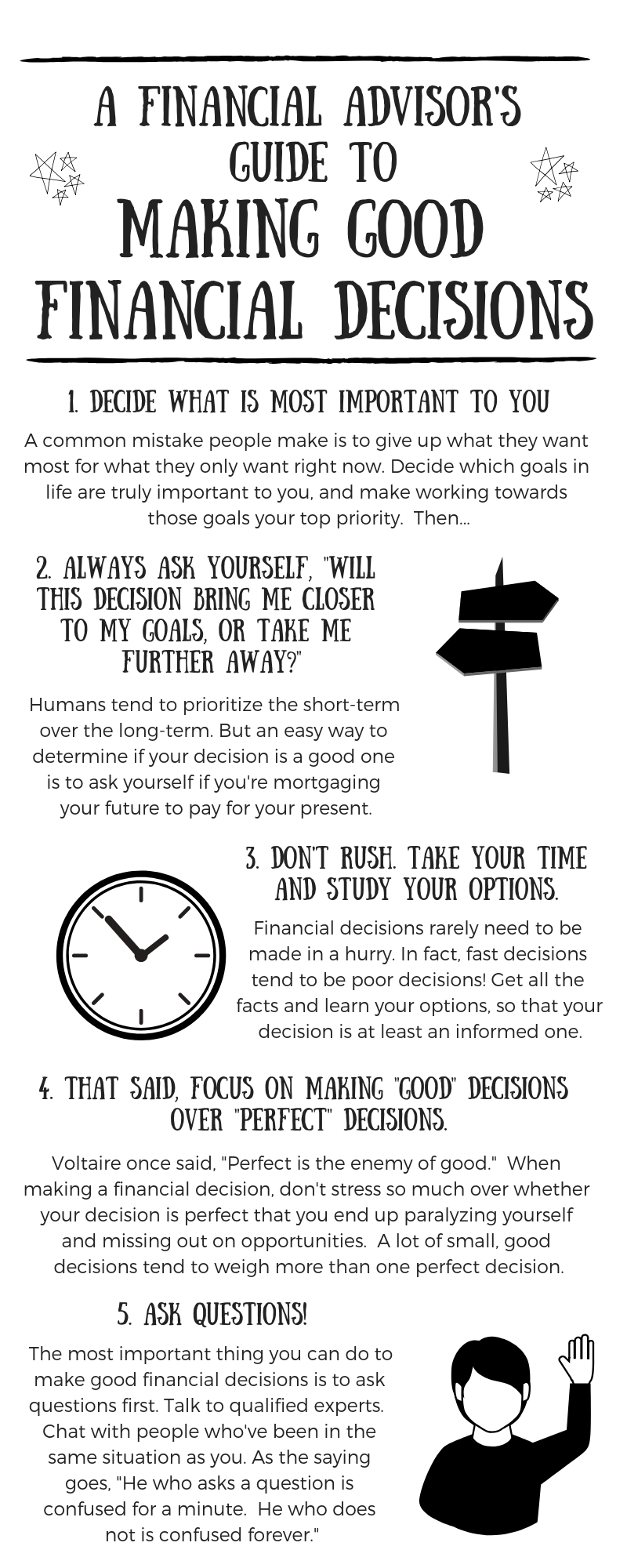Things Most Advisors Don’t Tell You #1
When it comes to helping people reach their goals, most financial advisors tend to focus on areas like investing, tax planning, and other money-related topics. We are no exception. After all, these things are critically important if you want to save for retirement, start a business, travel the world, or simply leave a legacy for your family.
However, we’ve learned a very valuable lesson over the course of our careers: Achieving the things you care about most requires more than just money. There are certain habits and behaviors that, while not directly related to finance, can spell the difference between reaching your goals or not.
In our experience, people rarely hear about these from their advisors.
Although we are not life coaches, over the next few months, we’d like to share some non-financial lessons we’ve learned. It’s our belief that applying these lessons makes working towards your goals both easier and more rewarding. Let’s call them “Things Most Financial Advisors Don’t Tell You”.
So, without further ado, here is:
Things Most Advisors Don’t Tell You #1:
The importance of avoiding burnout
Burnout, of course, is a “physical or mental collapse caused by overwork or stress.”* Anyone who has ever worked a demanding job or raised children has probably experienced it at some point or another. But what does this have to do with your financial goals?
In a word: Everything.
You see, there’s a reason we call it “working towards your financial goals.” Because it’s a lot of work! It’s not uncommon to take decades to accomplish what you value most.
During that time, you may work at the same job for many years. Or, you may change jobs frequently. You may set aside money for the future only to be forced to use it when times are tough. As a result, there may be occasions where the daily grind just doesn’t seem like it’s getting you anywhere. In other words, you get burned out.
Some common symptoms of burnout include:
- Fatigue that just doesn’t seem to go away
- An inability to complete projects, or get started on new ones
- Apathy about your job or your goals
- An increase in addictive behavior (like eating unhealthy foods or watching too much TV)
- A drop in efficiency, competence, or productivity in your work
Here’s why this matters from a financial standpoint. People who are burned out often start making short-term decisions that delay their long-term goals. For example, instead of investing for the future, they start spending more on instant gratification. Instead of planning ahead and being proactive, they procrastinate. Instead of making consistent, steady progress towards the things they want most, they get side-tracked by things they only want right now. That’s why, as financial advisors, we try to teach our clients how important it is to do everything you can to avoid burnout. Here are a few methods we’ve found effective:
Take the idea of time management seriously. Time management might seem dry and boring, but in truth, it’s an incredibly useful skill that helps you get more out of your day while doing more of what you love! There are several methods, but most have the following in common: Setting aside specific times and time limits for specific activities every day.
Take smart vacations. Going on vacation is a common remedy for burnout, but some vacations are more therapeutic than others. If you’re trying to avoid burnout, don’t go somewhere far away that you’ve never been to. Those types of destinations, while rewarding, can also cause a lot of stress. (Ever wanted a vacation from your vacation?) Instead, revisit somewhere you know you’ll enjoy and have little trouble navigating.
Make physical and mental health your first priority. Take power naps every day. Work out. Eat healthy. Schedule times to pursue your passions. The more you take care of yourself, the more armored you’ll be against burnout. After all, you shouldn’t have to wait until retirement to start enjoying life!
Delegate/ask for help. Burnout is often a result of trying to do too much by yourself. While society often lauds “the rugged individual” or “do-it-yourself” types, the truth is, you are not alone. Don’t hesitate to delegate responsibilities to family members or ask neighbors and coworkers for help with projects! It can make a huge difference in avoiding burnout.
As you can see, working towards your financial goals involves more than just money. It involves taking care of yourself so that you keep moving forward, step by step, day after day.
In our next related post, we’ll dive more into the concept of time management, including how to balance the short-term and the long-term. In the meantime, have a great month!
*Vanessa Loder, “How to Prevent Burnout,” Forbes, January 30, 2015. https://www.forbes.com/sites/vanessaloder/2015/01/30/how-to-prevent-burnout-13-signs-youre-on-the-edge/#4f241d604e3d


